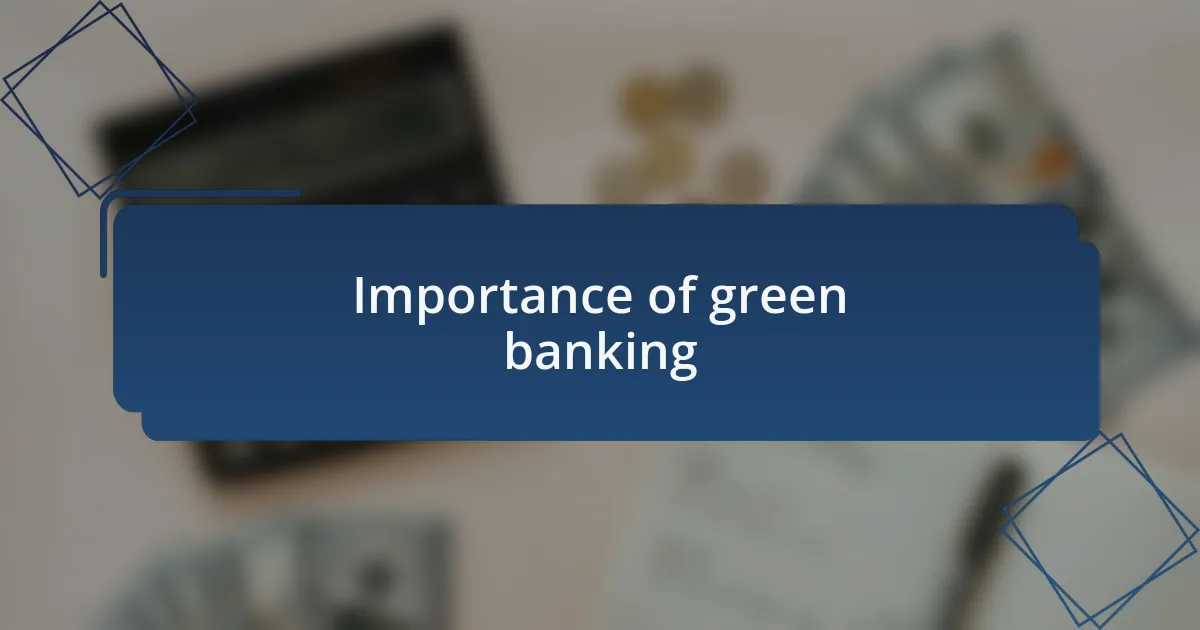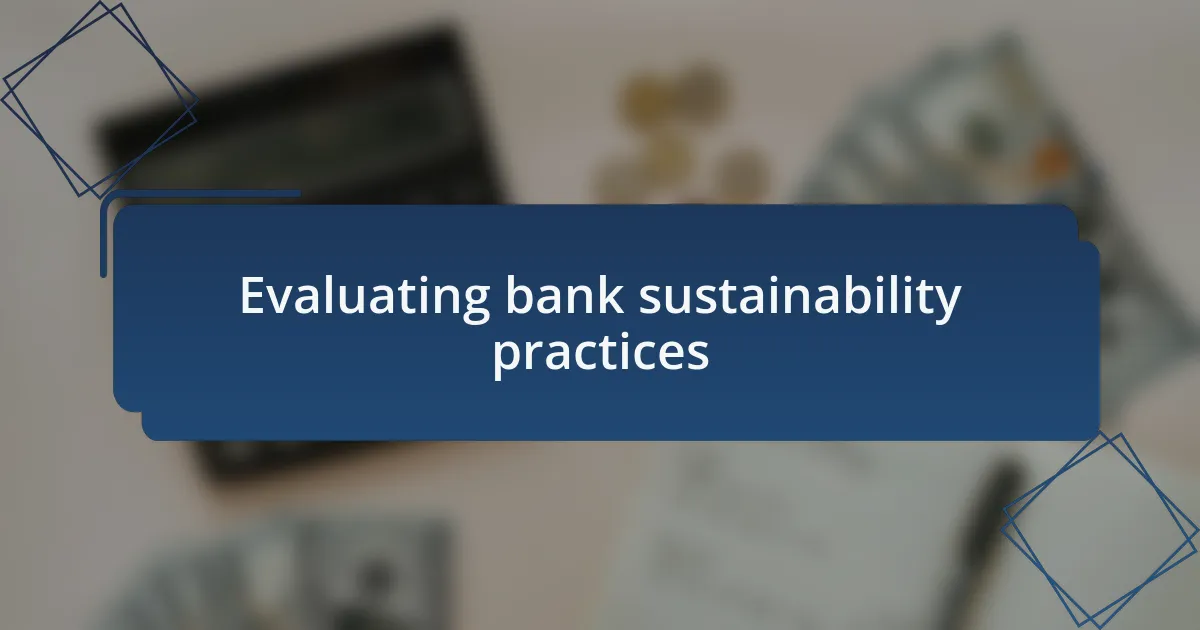Key takeaways:
- Eco-friendly finance empowers individuals to support sustainable projects, reshaping their financial choices for a greener future.
- Green banking redirects investments from harmful practices to sustainable initiatives, promoting environmental responsibility and positive social impact.
- Transparency in a bank’s sustainability practices is crucial; institutions should openly communicate their funding choices and operational strategies.
- Community engagement in sustainability efforts enhances a bank’s credibility and allows customers to contribute to local environmental initiatives.

Understanding eco-friendly finance
Eco-friendly finance is all about supporting practices that benefit the environment while promoting sustainable economic growth. In my experience, choosing an eco-friendly bank often felt overwhelming at first. But when I realized that my money could contribute to renewable energy projects instead of fossil fuels, everything shifted for me.
When I started exploring this world, I was struck by how impactful seemingly small choices can be. What does it mean to you when your savings help finance energy-efficient homes or small businesses focused on sustainability? This idea of turning my finances into a force for good made me rethink my approach completely.
One of the most profound moments was discovering that my financial choices could cultivate a greener future for the next generation. The notion that our funds could either support destructive practices or nurture beneficial ones felt like a personal responsibility. This realization spurred me to delve deeper into eco-friendly finance, leading to more sustainable decisions that I now feel proud of.

Importance of green banking
Green banking plays a crucial role in combating climate change by redirecting funds from harmful investments to sustainable initiatives. I remember the moment I discovered that my account could help finance solar energy projects; it made me feel like I was part of a larger solution. It’s empowering to think about the concrete positive changes my deposits can help achieve.
Moreover, choosing a green bank sends a strong message to traditional financial institutions about the importance of sustainability. I found it rewarding to align my values with my financial choices, and it motivated me to educate friends and family about the impact of their banking decisions. How often do we consider the ethical implications of where we put our money? By opting for a green bank, I felt I was actively participating in a movement that challenges the status quo.
In addition to environmental benefits, green banking frequently offers innovative products that enhance financial literacy and responsibility. For instance, I was pleasantly surprised to find investment opportunities that specifically fund local, eco-conscious businesses. This experience not only solidified my commitment to green banking but also opened up rewarding avenues for my financial growth, blending personal and planetary well-being in a way I had not anticipated.

Evaluating bank sustainability practices
Evaluating a bank’s sustainability practices requires a closer look at their investment portfolios and lending policies. When I was researching potential green banks, I was particularly struck by how some institutions openly shared their funding choices, detailing the types of projects they supported. For me, transparency was a major factor—if a bank couldn’t clearly articulate its sustainable initiatives, I didn’t feel comfortable using their services.
I also paid attention to how a bank manages its operations internally. It was refreshing to see banks that prioritized renewable energy sources for their buildings or implemented waste-reduction strategies. This made me think: if they couldn’t practice sustainability at home, how seriously could I take their commitments to green projects in the community? The little green initiatives they embraced showed me that being eco-friendly was woven into every aspect of their organizational culture.
Lastly, I found it valuable to assess a bank’s community engagement with sustainability efforts. For example, I discovered banks that partnered with local environmental organizations, supporting clean-up projects and educational workshops. This level of involvement not only enhanced their credibility but also made me feel good about my choice—knowing that my banking decision could amplify local green initiatives. I often ask myself: isn’t it invigorating to support institutions that contribute positively to my community?